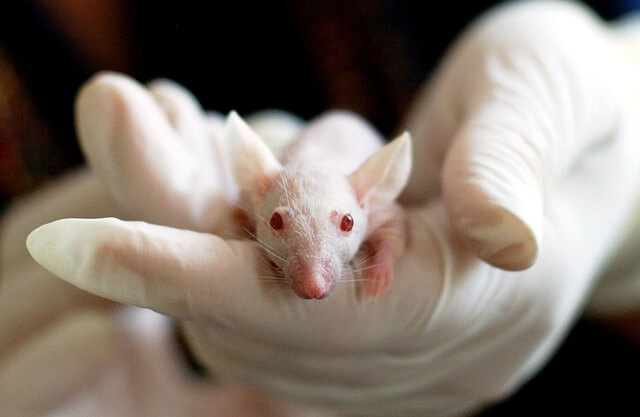There are many dangers that reside in laboratories: fires; explosions; normal and chemical burns, flesh wounds and other effects of contact with chemicals or chemical vapors. Some of these hazards pose more risk than others, but all can be serious and should be treated so.
Lab Safety Hazards of Old
Laboratory safety is key to preventing injuries and accidents from occurring. In the past, lab safety was virtually non-existent. Scientists would often work with chemicals without proper protective gear. One scientist even smoked while working in a lab. Due to the lack of safety procedures and equipment, the accidents that occurred in the laboratories did have some serious repercussions. For instance, both Joseph-Louis Gay-Lussac (1778–1850) and Robert Bunsen (1811–1899) suffered eye damage after chemical explosions. Other scientists suffered from poisoning and/or medical harm from coming into contact with chemicals or chemical vapors. Over the last several decades, however, we have had several changes to laws that put forth new rules for lab safety.
Occupational Safety and Health Act
In 1970, President Nixon signed the Occupational Safety and Health Act that set standards designed to protect workers. These standards required employers and labs to implement practices, methods, or processes to appropriately protect workers. One such change required labs to provide protective gear to scientists: gear such as protective eye-wear and lab coats. However, laboratory safety is an ever changing process. Lab accidents are investigated and recommendations are made to improve safety.
Recent Events Which Changed Lab Safety
University of California, Los Angeles
A laboratory accident that made headlines occurred at University of California, Los Angeles (UCLA) in 2008. A student, Sheharbano “Sheri” Sangji, suffered second and third degree burns from a chemical fire that took place in the lab. Sheri was not fortunate and died from the injuries weeks later. The fire started after a syringe stopper came off, spilling a highly flammable and air-sensitive chemical onto Sheri’s synthetic sweater. At the time, UCLA had not implemented a policy that required students and staff to wearing protective gear in the laboratory. They also were accused of not providing proper safety training to Sheri. As a result, the university was fined about $68,000 and faced felony charges. Since the accident, UCLA implemented a policy that required protective gear to be worn, including the requirement that scientists working in chemistry labs must wear blue flame-resistant lab coats.
Texas Tech University
In 2010, Texas Tech University also faced investigations after an explosion occurred in a chemistry lab. The explosion occurred after a exploded due to mishandling. The two principal investigations (PI) had assigned the task of synthesizing and testing a new compound to a senior and first-year graduate student. The investigators believed they had verbally established a 100 milligram limit for the compound, but no formal communication or verification for compliance was found. The two students went above the limit and tried to press out clumps in the compound, which resulted in the explosion. The senior graduate student survived the blast, but was seriously injured.
University of Hawaii at Manoa
Unfortunately, UCLA and Texas Tech were not the only school to have a serious accident in a chemistry lab. In 2016, the University of Hawaii at Manoa had an explosion occur in their lab that cause a postdoctoral researcher to lose an arm. This accident was the result of a static charge that entered the gas tank from the digital pressure gauge. The tank was not properly grounded. Prior to the explosion another researcher told a PI that she heard a clicking sound on a 1 gallon vessel’s digital pressure gauge. Further investigation by the PI revealed that the petri dishes inside the vessel were singed and cracked. The investigator advised to the researcher that this vessel should not be used again. The same digital gauge model was on the tank that exploded.
University Labs Under Scrutiny
These accidents brought scrutiny on the lab safety in university labs. Especially the fact that students and staff are working with dangerous substances without proper training or supervision. These accidents also emphasize the need for proper documentation and effective hazard communication. While these are horrible accidents, universities and laboratories have learned from the mistakes made. After each of these incidents, new standards for safety were implemented by the schools in hopes that similar accidents would not occur again.
Promoting a Lab Safety Culture
All of these accidents had serious, deadly or potentially deadly consequences. The Occupational Safety and Health Administration (OSHA) have increased the scrutiny university research sectors receive. Universities are stepping up by improving upon their lab safety procedures and programs. Hopefully, other universities and labs will learn from these mistakes and work to promote a lab safety culture within their own institutions.
Call-to-Action
The requirement of safely handling hazardous material is not restricted to inside laboratories. Proper shipping is also required. eShipLab is a simple, accurate, easy-to-use system for shipping hazardous materials and dangerous goods. It is compliant with all government regulations, so you can ship your lab materials with confidence. For more information on how eShipLab can help your laboratory, contact us at (972) 518-1775 using extension 116.
By: Ashleigh Cue
Source Links:
http://ehstoday.com/protective-clothing/are-you-prepared-top-5-laboratory-hazards
https://www.chemheritage.org/distillations/magazine/not-so-great-moments-in-chemical-safety
https://webapps.dol.gov/elaws/elg/osha.htm
http://www.sciencemag.org/careers/2016/08/d-j-vu-all-over-again
http://www.hawaii.edu/news/wp-content/themes/davinci-20-child/docs/report-1-university-of-hawaii.pdf
https://www.revealnews.org/article/ucla-researchers-death-draws-scrutiny-to-lab-safety/
http://www.universitybusiness.com/article/new-era-lab-safety




